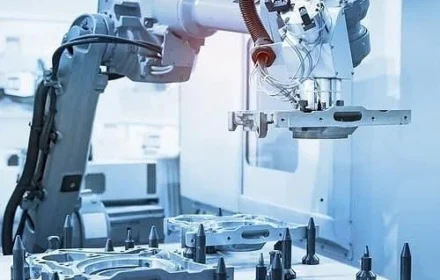PLC Architecture Selection: Balancing Maintenance Costs and System Reliability
The True Cost of Industrial Control Systems
PLC selection requires careful lifecycle cost analysis. Initial purchase price represents only part of total ownership. According to ARC Advisory Group, maintenance comprises 60-80% of total automation costs. Therefore, choosing between compact and modular PLCs demands strategic evaluation.
Compact PLC Advantages and Limitations
Compact PLCs offer integrated design benefits for specific applications:
- Lower initial hardware investment requirements
- Reduced cabinet space and installation complexity
- Simplified wiring and commissioning processes
- Ideal for fixed-function, stable applications
These features make compact PLCs suitable for basic control tasks.
Compact PLC Maintenance Challenges
The integrated design creates significant maintenance limitations:
- Complete unit replacement for component failures
- Higher spare parts inventory costs
- Longer downtime during repair operations
- Limited expansion and upgrade capabilities
These factors increase long-term operational costs substantially.
Modular PLC System Advantages
Modular architectures provide superior maintenance flexibility:
- Individual module replacement reduces repair costs
- Faster mean time to repair (MTTR) through targeted fixes
- Gradual system expansion without complete replacement
- Better spare parts management and inventory control
These benefits support continuous factory automation operations.
Modular System Scalability Benefits
Modular PLCs enable seamless system evolution:
- Easy integration of new communication protocols
- Incremental I/O capacity expansion as needed
- Support for redundancy and safety system additions
- Longer product lifecycle and support availability
This scalability protects automation investments effectively.
Lifecycle Cost Analysis Methodology
Organizations should evaluate these critical cost factors:
- Initial hardware and installation expenses
- Annual maintenance and repair costs
- Downtime impact on production operations
- Future expansion and upgrade requirements
Comprehensive analysis reveals true total cost of ownership.
Application-Specific Selection Guidelines
Different scenarios favor specific architecture choices:
- OEM equipment: Compact PLCs for cost-sensitive applications
- Process plants: Modular systems for critical operations
- Discrete manufacturing: Hybrid approaches based on criticality
- Expansion projects: Modular platforms for future growth
Proper matching ensures optimal performance and cost efficiency.
Control System Integration Considerations
Both architectures integrate with modern automation infrastructure:
- Compatibility with existing DCS and SCADA systems
- Network integration through standard industrial protocols
- Data exchange with factory automation networks
- Cybersecurity features and implementation requirements
Integration capabilities affect overall system performance.
Expert Analysis: Industrial Automation Trends
From World of PLC’s experience, several trends influence architecture selection:
- Increasing focus on total cost of ownership calculations
- Growing demand for system flexibility and scalability
- Rising importance of quick maintenance and repair capabilities
- Expanding need for legacy system compatibility and upgrades
These factors make modular systems increasingly attractive.
Implementation Best Practices
Successful PLC deployment requires careful planning:
- Conduct thorough application requirement analysis
- Evaluate maintenance capabilities and staff skills
- Plan for future expansion and technology upgrades
- Establish comprehensive spare parts strategy
Proper planning ensures optimal system performance and reliability.
Real-World Application Scenarios
Different industries benefit from tailored approaches:
- Packaging machinery: Compact PLCs for standardized equipment
- Water treatment plants: Modular systems for critical processes
- Automotive assembly: Mixed architecture based on line criticality
- Food processing: Modular PLCs for hygiene and reliability
Industry-specific requirements guide optimal architecture selection.
Connecting Architecture to Operational Excellence
Optimal PLC selection requires expertise and quality components. For industrial automation solutions, World of PLC provides comprehensive control system products and guidance. Our experience ensures cost-effective automation implementations.
Frequently Asked Questions
- What typical payback period justifies modular PLC premium? Most facilities recover additional costs within 2-3 years through reduced downtime and maintenance savings.
- How do staffing considerations affect architecture choice? Facilities with limited maintenance staff often benefit from compact systems’ simplicity and reduced training requirements.
- What documentation supports effective lifecycle costing? Maintain detailed records of repair history, downtime costs, and expansion requirements for accurate comparisons.
| odel | Title | Link |
|---|---|---|
| 1756-L1 | Allen Bradley ControlLogix Processor 64KB Memory PAC Module | Learn More |
| 1756-L1M1 | Allen Bradley ControlLogix 5550 Processor Module Controller | Learn More |
| 1756-L1M2 | Allen Bradley ControlLogix Processor Module 1MB Memory | Learn More |








